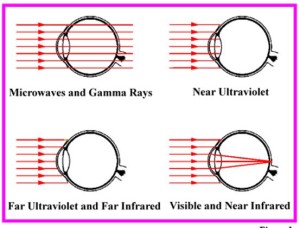Spring 2016 3 DOT Goliath Laser Tag Game Safety Requirements for Children
By: Tae Min Lee (Missions, Systems, and Testing Engineer)
We have to make sure that the level 1 requirement for safety has been addressed before we start implementing the laser tag system we will be using for our product.
Problem:
The first design of implementing the laser tag game was to use a laser module with a photo resistor as the receiver. However, it became a problem with making the product safe for children to play with due to the following:
- Laser was classified as level 2
- Class 2 – lasers emit radiation in the visible portion of the spectrum, and protection is normally afforded by the normal human aversion response (blink reflex) to bright radiant sources. They may be hazardous if viewed directly for extended periods of time. Ex: Laser Pointer
- Most laser module power rating are 5mW, but to be considered safe it must be 1mW to be classified as level 1.
- Class 1 – lasers are considered to be incapable of producing damaging radiation levels, and are therefore exempt from most control measures or other forms of surveillance.
- Lasers are concentrated beams (visible) that passes through the cornea and focuses on one point on the back of the retina (shown in figure 1).
- The concentrated laser beam cause damage to the cornea, retina, and the lens (figure 2).
- Visible (400 – 760 nm Wavelength)
- Most of the radiation is transmitted to the retina.
- Overexposure may cause flash blindness or retinal burns
- Quick Calculation of the magnification of the damage to the eye:
- Visible (400 – 760 nm Wavelength)
Conclusion: Laser retinal injury can be severe because of the focal magnification making it dangerous to implement a laser module for the laser tag game.
Solution:
To make a product that is safe for children to play with we implemented the use of IR LED emitter for the laser tag game. The safety requirements for the Goliath using IR emitter will be stated below:
- Emitter must not produce enough radiation that brings harm to the eyes
- Emitter will not produce a highly concentrated beams that will damage the retina (figure 1).
- IR LED is non-visible light that doesn’t pass the cornea making it safe
Sources
- https://web.stanford.edu/dept/EHS/prod/researchlab/radlaser/laser/procedures/classes.html
- http://www.fda.gov/ForConsumers/ConsumerUpdates/ucm363908.htm#lasers
- http://oregonstate.edu/ehs/laser/training/laser-biological-hazards-eyes



